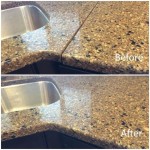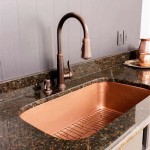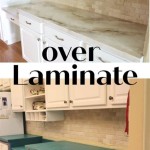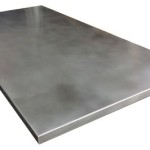Granite vs. Marble Countertops: A Comprehensive Comparison
Selecting the appropriate countertop material is a crucial decision for any kitchen or bathroom renovation project. Two of the most popular and enduring options are granite and marble. Both are natural stones celebrated for their beauty and durability, but they possess distinct characteristics that make them suitable for different applications and preferences. This article will delve into a detailed comparison of granite and marble countertops, outlining their differences in composition, appearance, durability, maintenance, and cost, providing a thorough understanding to aid in making an informed decision.
Granite and marble are both quarried from the earth and formed under intense heat and pressure. However, their geological origins contribute significantly to their unique properties. Granite is an igneous rock, formed from the slow cooling of magma deep beneath the Earth's surface. This process allows for the development of a tightly interlocked crystalline structure, composed primarily of quartz, feldspar, and mica. Marble, on the other hand, is a metamorphic rock, formed when limestone is subjected to high heat and pressure. This transformation alters the composition of the original limestone, recrystallizing the calcium carbonate and resulting in a denser, more durable stone.
Appearance and Aesthetic Qualities
The visual appeal of a countertop is often a primary consideration. Granite and marble offer distinct aesthetic experiences. Granite is known for its varied and often dramatic patterns. The presence of different minerals within the stone results in a wide range of colors, from light grays and beiges to deep blacks, reds, and greens. These colors are often distributed in speckled, granular, or veined patterns, providing a naturally irregular and dynamic appearance. No two granite slabs are exactly alike, ensuring a truly unique countertop surface.
Marble typically exhibits a more uniform color palette, generally ranging from white to shades of gray, cream, and pink. The characteristic feature of marble is its veining, which is caused by mineral impurities that were present during the metamorphic process. These veins can range from subtle, delicate lines to bold, dramatic streaks. The veining pattern in marble is often perceived as elegant and sophisticated, contributing to its reputation as a luxury material. Carrara marble, with its soft gray veining on a white background, and Calacatta marble, with its bolder, more dramatic veining, are particularly prized for their aesthetic beauty.
The choice between granite and marble often depends on the desired overall design aesthetic. Granite is generally favored for its natural, earthy look, while marble is preferred for its classic, refined elegance. However, both materials can be incorporated into a variety of design styles, depending on the specific slab selected and the surrounding design elements.
Durability and Resistance to Damage
The durability of a countertop is paramount, especially in high-traffic areas like kitchens. Granite is renowned for its exceptional durability. Its tightly interlocked crystalline structure makes it highly resistant to scratches, heat, and staining. Granite can withstand everyday wear and tear with minimal risk of damage. It is also naturally resistant to bacteria, making it a hygienic choice for food preparation surfaces. While granite is highly durable, it is not completely impervious to damage. Sharp impacts can potentially chip or crack the surface, although this is relatively rare.
Marble, while also a durable material, is inherently softer and more porous than granite. This makes it more susceptible to scratches, etching, and staining. Etching occurs when acidic substances, such as lemon juice, vinegar, or tomato sauce, come into contact with the marble surface and react with the calcium carbonate, creating a dull mark. Staining can occur if spills are not promptly cleaned, allowing liquids to penetrate the porous surface. While sealing can help to protect marble from staining, it does not eliminate the risk of etching. Marble is also more prone to chipping and scratching than granite, requiring greater care in everyday use.
The relative durability of granite and marble should be a key consideration based on lifestyle and intended use. For individuals who prioritize low maintenance and high resistance to damage, granite is generally the more practical choice. For those who appreciate the aesthetic beauty of marble and are willing to invest in more diligent care, it can be a suitable option.
Maintenance and Care Requirements
The maintenance requirements of a countertop material directly impact its long-term appearance and performance. Granite requires relatively minimal maintenance. Regular cleaning with a mild soap and water solution is generally sufficient to maintain its cleanliness and shine. It is recommended to seal granite countertops annually to help prevent staining and water absorption. Sealing involves applying a sealant that penetrates the pores of the stone, creating a protective barrier. The frequency of sealing may vary depending on the type of granite and the sealant used.
Marble requires more diligent and frequent maintenance than granite. Regular cleaning with a pH-neutral cleaner is essential to avoid damaging the surface. Acidic or abrasive cleaners should be strictly avoided, as they can cause etching and scratching. Spills should be cleaned immediately to prevent staining. Sealing marble countertops is crucial but also requires more frequent application, typically every three to six months, depending on the type of marble, the sealant, and the level of use. Even with regular sealing, marble can still be susceptible to etching and staining, requiring extra care and attention to prevent damage.
The choice between granite and marble should be based on a realistic assessment of one's willingness and ability to perform the necessary maintenance. For individuals who prefer low-maintenance surfaces, granite is the more suitable option. For those who are prepared to invest the time and effort required to properly care for marble, it can be a worthwhile choice.
Cost Considerations and Value
The cost of granite and marble countertops can vary significantly depending on factors such as the grade of the stone, the rarity of the color and pattern, the complexity of the fabrication, and the installation costs. Generally, granite is considered to be more affordable than marble. Common granite colors and patterns are readily available and tend to be priced lower than exotic or rare granites. Marble, particularly high-quality varieties like Carrara and Calacatta, is often more expensive due to its rarity and the higher demand for its distinctive aesthetic. However, the cost of both granite and marble can fluctuate based on market conditions and the specific supplier.
The long-term value of granite and marble countertops extends beyond their initial cost. Both materials are considered to be high-end choices that can increase the value of a home. Their durability and longevity ensure that they will retain their beauty and functionality for many years, contributing to the overall appeal and marketability of the property. While marble may require more maintenance and is more susceptible to damage, its timeless elegance and luxurious reputation can justify the higher cost for some homeowners.
When considering the cost and value of granite and marble countertops, it is important to obtain quotes from multiple suppliers and fabricators. Comparing prices and product offerings can help to ensure that you are getting the best possible value for your investment. It is also essential to factor in the costs of installation, sealing, and ongoing maintenance when evaluating the overall affordability of each material.

Granite Vs Marble Difference Between And

Granite Vs Marble Countertops What Is The Difference

Marble Vs Granite When And Why Should You Choose Or Marmi Rossi Leading Processing Since 1966

Granite Vs Marble Countertops Com Tv Channel Counter Intelligence Youtube

Granite Countertops Vs Marble Positives Drawbacks

Marble Vs Granite Which Is The Better

Granite Vs Marble Countertops Which Option Is Right For You Woodard

Granite Vs Marble Countertops Similarities Differences Flemington

Quartz Vs Marble Granite Porcelain Countertops

Understanding Marble Granite Benson Associates Interior Design
See Also








